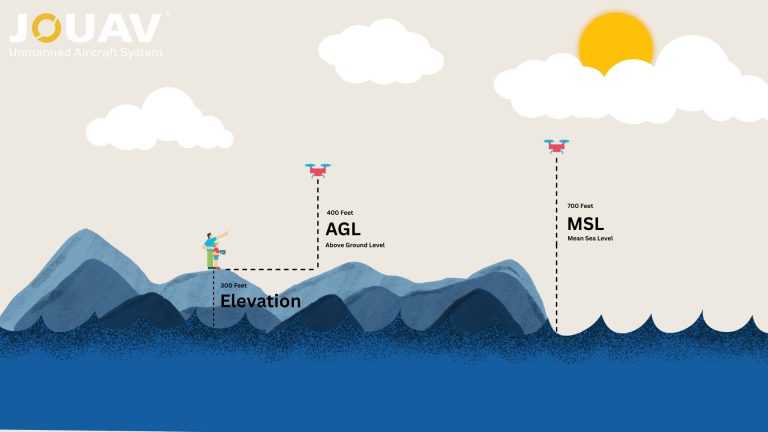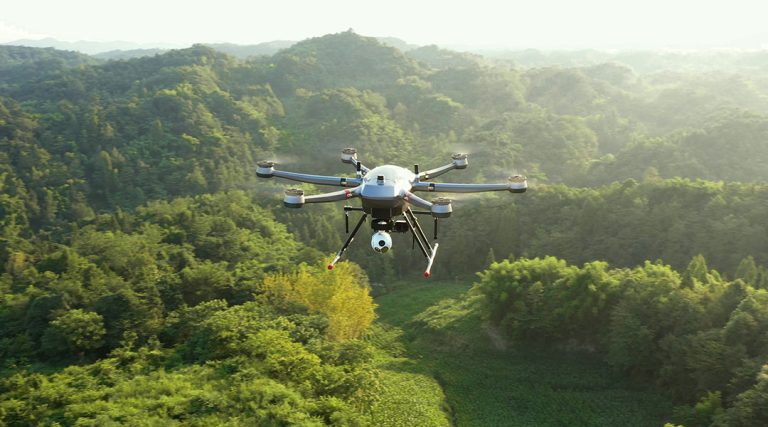Can You Fly a Drone in the Rain? (2025 Comprehensive Guide)
So, you're wondering if you can fly your drone in the rain. The answer is generally a resounding NO. Most drones—especially consumer models like the DJI Mini or Air series—aren’t waterproof.
Rain can fry the electronics, mess with the GPS, and even blur the camera, making it a risky move.
There are a few exceptions. Some specialized drones, like the JOUAV PH-20, have a higher IP rating and are built to handle moderate rain.
But unless you’ve got one of those, flying in wet conditions could mean ruining an expensive drone, voiding your warranty, or worse—causing a crash.
In this guide, we’ll break down why most drones don’t mix well with rain, what happens if yours gets wet, and how to protect it if you have to fly in bad weather.
Let's get into it.
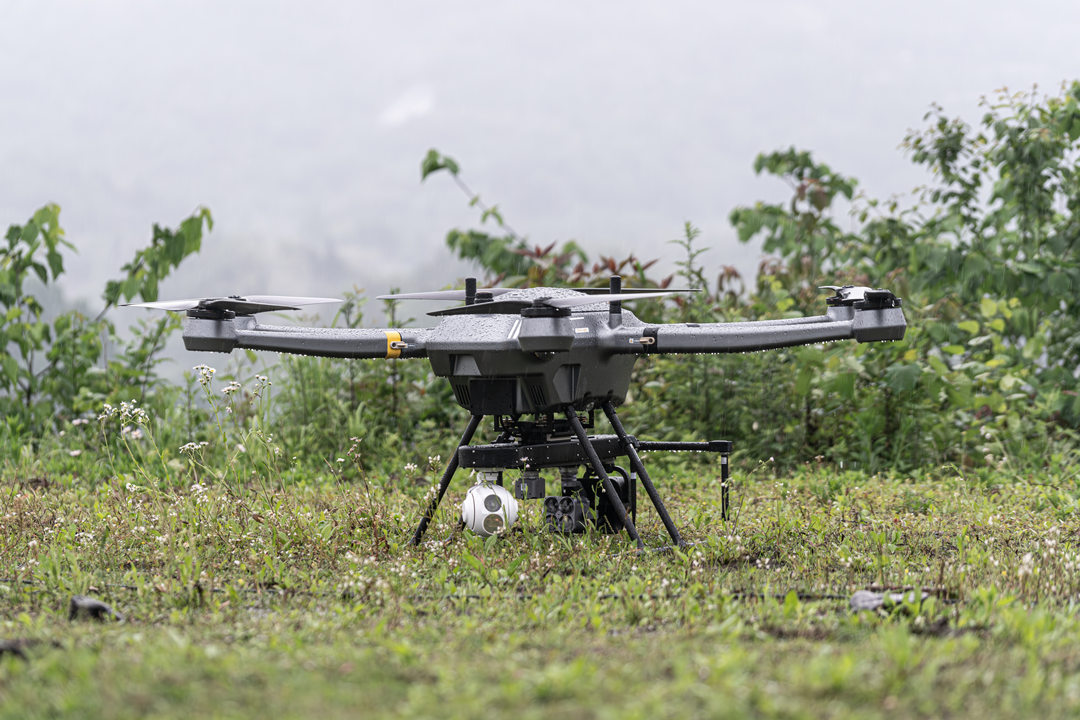
What Exactly is an IP Rating, and Why is it Important for Drones?
When you're looking into a drone's ability to handle the real world, you'll inevitably run into "IP ratings." You might have wondered, what's the big deal? Well, IP, short for Ingress Protection (or sometimes International Protection), is a globally recognized standard.
Think of it as a universal language that tells you how well a device is shielded from things like dust and water. It's not just some niche tech term; this system, established by the International Electrotechnical Commission, is used worldwide, from the US to Europe and Asia.
Essentially, an IP rating gives you a clear picture of how resilient your drone's internal parts are against environmental hazards. It's a simple, two-digit code that breaks down protection into two key areas:
- The first digit (0-6): This tells you how well the drone is protected against solid objects like dust and debris.
- The second digit (0-9): This indicates the level of protection against liquids, ranging from light splashes to full submersion.
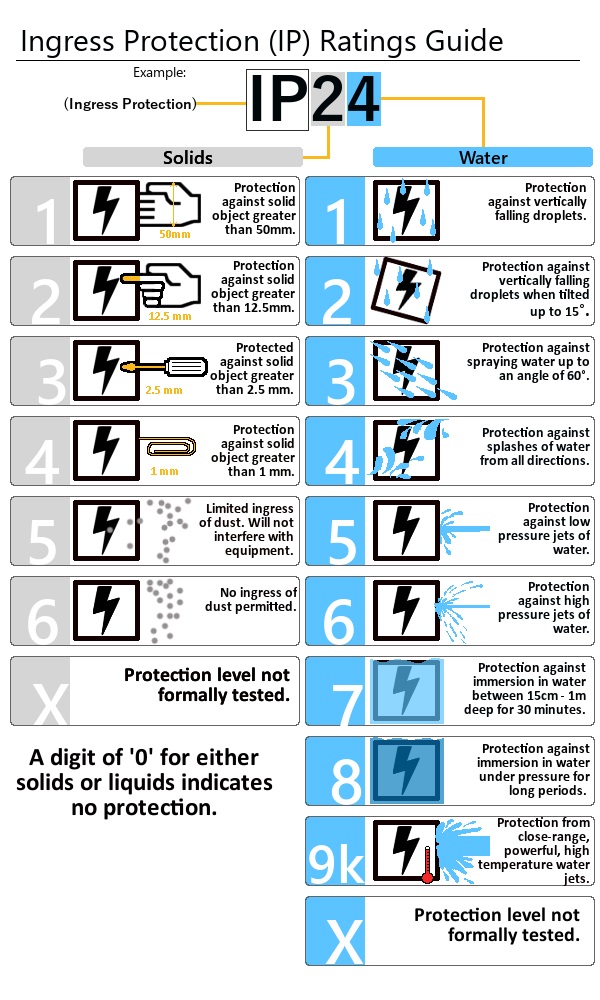
So, when you see something like "IP43," it means the drone has a certain level of defense against solids (4) and a defined resistance to moisture (3). Remember, the higher the numbers, the better the protection. A "0" in either digit simply means no protection at all.
Sometimes, you might even see an extra letter tagged onto the end of an IP rating, like "M." These letters are used by manufacturers to give you more specific details about resistance to things like oil or high voltage.
Now, why does this matter for drones? Most consumer drones, the ones we love for capturing stunning aerial views, often lack official IP ratings. This is a critical gap.
Without a clear IP rating, you're essentially flying blind when it comes to knowing how your drone will handle even drizzly or dusty conditions. This lack of certainty leaves those vital components—motors, batteries, and circuit boards—vulnerable.
In contrast, industrial drones used for power line inspections, search and rescue, and mapping operations typically have higher IP ratings to withstand harsh weather. Take the JOUAV PH-20, for example—its IP55 rating means it can handle moderate rain and dust, making it far more reliable for demanding outdoor missions.
What Happens If You Fly a Drone in the Rain?
Flying a drone in rainy conditions introduces a chain of risks that compromise both immediate functionality and long-term durability.
Immediate Electronic Failures and Short Circuits
Bridging Contacts and Triggering Errors: Rainwater, being conductive, can bridge contacts on circuit boards and connectors, leading to immediate short circuits. This can instantly damage critical components like the flight controller, electronic speed controllers (ESCs), and battery terminals, potentially causing mid-flight failures.
Direct Component Damage: Sensitive components such as motors, sensors, and cameras are highly susceptible to damage from water ingress, which can cause shorting or erratic behavior.
Latent Failures and Gradual Degradation: Even if a drone survives initial rain exposure, ingested water can create latent failures. Residual moisture may not cause an immediate short, but it can lead to gradual corrosion and eventual sudden glitches or loss of control. DJI engineers emphasize that even small amounts of water can lead to electrical shorts and damage if the drone isn't thoroughly dried.
Cooling System Vulnerability: Consumer drones often use cooling fans or airflow systems that draw air (and potentially fine mist) through the body. In rainy conditions, this can result in water being drawn into the drone's shell, increasing the risk of corrosion and circuit failure.
Corrosion and Long-Term Water Damage
Conductive Residues and Corrosion: Beyond immediate short-circuiting, moisture poses a long-term threat: corrosion. Water, especially if it contains impurities, can leave conductive residues on the drone's electronics. These residues corrode metal contacts, solder joints, and wiring over time, potentially leading to permanent damage.
Saltwater's Destructive Nature: Saltwater is particularly corrosive and conductive. Flying in ocean spray or rain near the sea can cause rapid and severe damage.
Component Failures and Irreversible Damage: Uncleaned corrosion can lead to component failures, such as rusted motor bearings or corroded battery connectors. The internal damage might not be immediate, but it can be irreversible if not addressed.
The Risk vs. Reward: Manufacturers and experienced pilots strongly advise against risking ongoing damage to expensive gear with "one-time rain flights."
Drone Flight Performance Issues in Rainy Conditions
Aerodynamic Disruptions: Raindrops striking spinning propellers and the airframe can disrupt aerodynamics, causing vibrations, imbalances, and reduced lift. Heavy rainfall significantly degrades lift and efficiency, forcing motors to work harder.
Increased Battery Consumption: The increased motor workload in rain leads to higher battery consumption, resulting in shorter flight times.
Wind and Turbulence: Rain is often accompanied by wind and turbulence, making the drone less stable and harder to control. Motors draw more power to compensate, further reducing battery life. Cooler temperatures also reduce battery performance.
Sensor and Navigation Interference: Rain and fog can interfere with the drone's sensors and navigation systems. Optical and infrared sensors used for obstacle avoidance and positioning can be obscured or confused by precipitation, leading to false obstacle detections or unstable hovering.
Reduced Visibility and FPV Issues: Rain on the camera lens reduces visibility, making FPV piloting difficult. Water droplets can blur or distort the video feed.
Radio Signal and GPS Degradation: Heavy rain can attenuate radio signals and degrade GPS accuracy, although this is usually only significant in severe downpours.
Unpredictable Flight Behavior and Loss of Control: The combined effects of these factors can lead to unpredictable flight behavior, unresponsive controls, and autonomous feature malfunctions. Strong rain and wind can even cause total loss of control, resulting in flyaways or crashes.
Drone Types and Rain Resistance
Not all drones are created equal when it comes to handling rain. Their ability to withstand moisture depends on design, materials, and certification.
| Drone Type | Rain Survival Features | Max Rain Tolerance |
| Consumer | None | None |
| Prosumer | Partial sealing | Light mist and limited splash |
| Professional | IP45–IP55, sealed battery | Light to moderate rain |
| Waterproof | IP67–IP68, waterproof motors | Heavy rain/submersion |
| Military | MIL-STD-810G tested | All-weather operations |
Consumer Drones (Little to No Rain Resistance)
Most consumer drones, such as the DJI Mini 4 Pro, Autel EVO Nano, and DJI Air 3, lack formal water resistance. These drones have open motor designs, exposed circuitry, and cooling vents, making them highly susceptible to water ingress. Even light drizzle can short-circuit flight controllers, corrode battery terminals, and damage gimbal components.
Manufacturers explicitly warn against flying these drones in wet conditions, and water damage is not covered under warranty. Even temporary exposure to mist or humidity can cause condensation inside the drone’s electronics, leading to malfunctions. These drones are strictly fair-weather tools, and pilots should land immediately if rain starts during a flight.
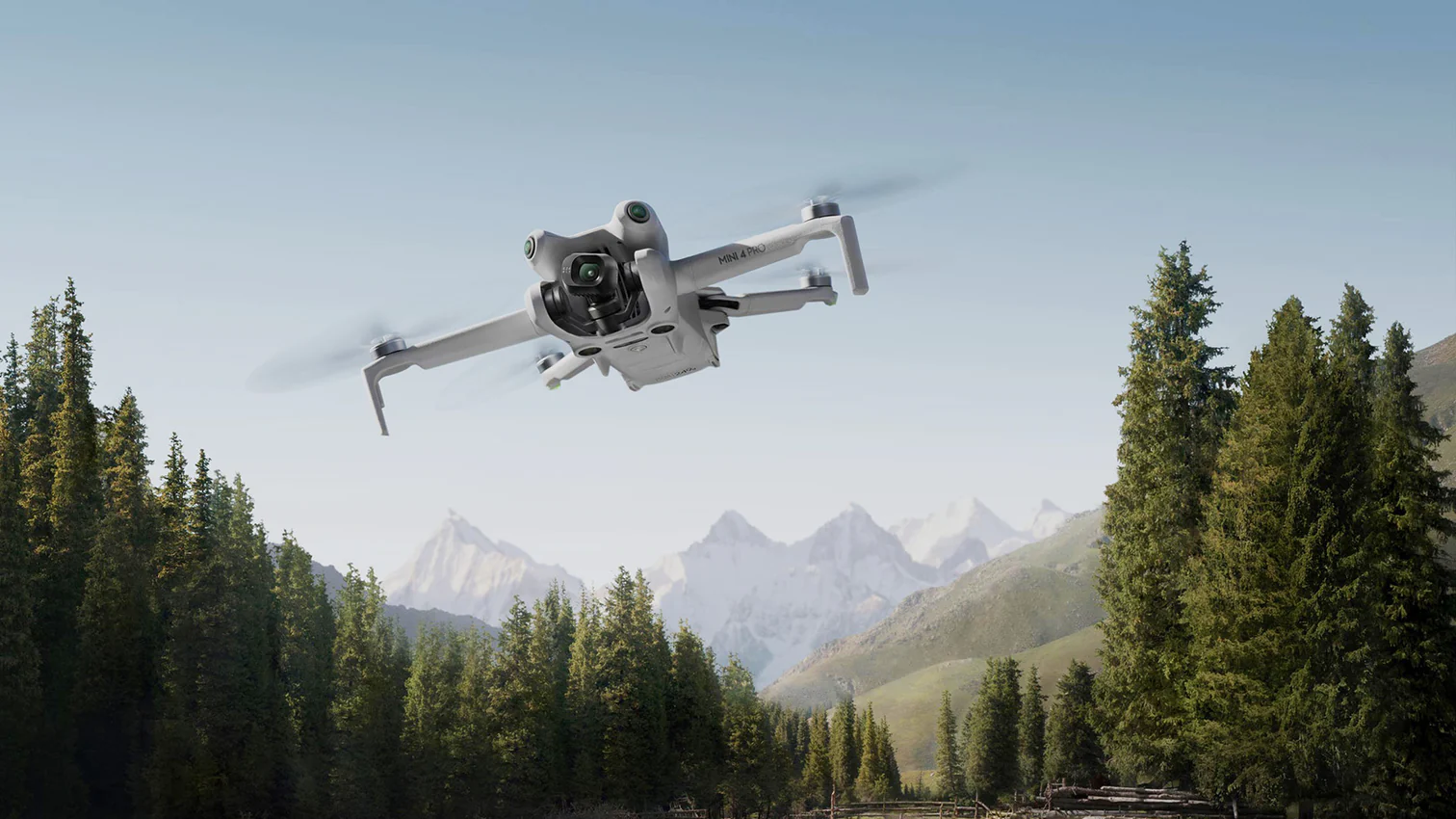
Prosumer Drones: Limited Splash Resistance
Prosumer drones, like the DJI Phantom 4 Pro V2.0 or Autel EVO Lite+, offer partial weather sealing but no official IP rating. Features such as silicone-gasketed battery compartments and minimal water-resistant coatings provide some protection against brief exposure to mist or light rain.
However, these drones are not designed for sustained wet conditions. Water can still seep through gaps in the frame, exposed motors, and cooling vents, leading to potential damage. While they may survive brief moisture exposure, flying them in rain is still highly risky and not recommended.
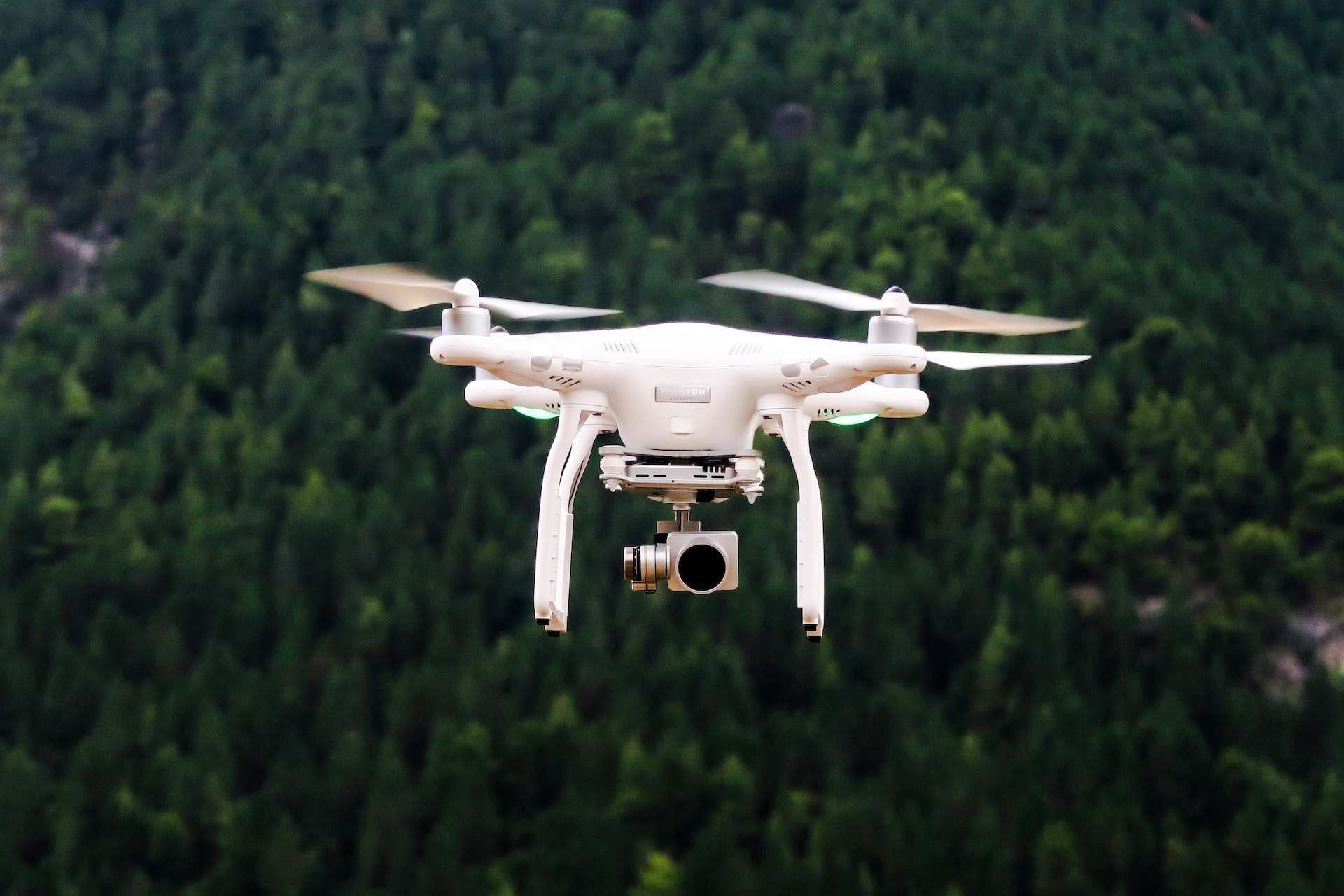
Enterprise & Industrial Drones: Light to Moderate Rain Resistance (IP45–IP55)
Enterprise and industrial drones are built for professional applications like infrastructure inspections, search and rescue, and public safety operations. These drones feature sealed connectors, conformal-coated electronics, and IP-rated protection to withstand light to moderate rain.
- JOUAV PH-20 (IP55): With a higher IP rating, this industrial-grade drone can handle moderate rain and wet environments, making it ideal for power line inspections, mapping, and emergency response missions.
- Parrot Anafi USA (IP53): This drone offers limited dust and water protection, making it suitable for operations in light rain.
- DJI Matrice 300 RTK (IP45): Designed for industrial use, this drone is resistant to low-pressure water splashes, allowing it to operate in light rain for short periods.
Despite having some level of waterproofing, these drones are still not fully waterproof and should not be flown in heavy rain or submerged in water. Prolonged exposure to moisture can weaken structural components, corrode metal parts, and degrade battery performance over time.
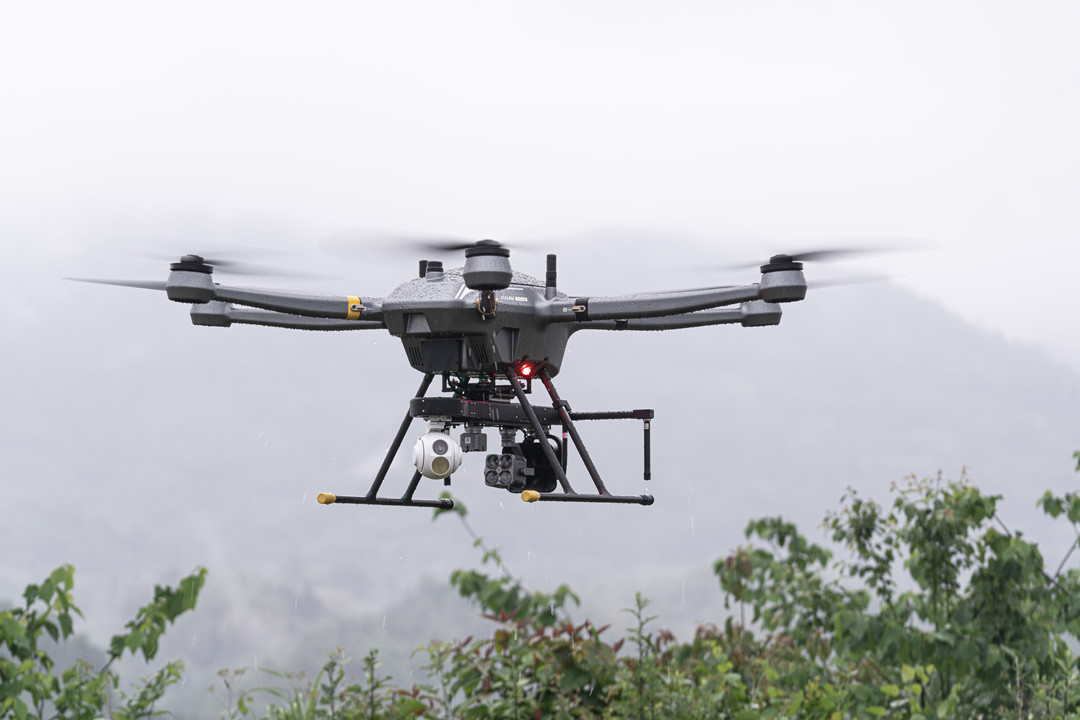
Fully Waterproof Drones: Built for Extreme Wet Conditions (IP67–IP68)
A small category of specialized drones is designed to be fully waterproof, capable of flying in heavy rain and storms, and even landing on water. These drones use marine-grade materials, corrosion-resistant coatings, and waterproof motors to operate in extreme conditions.
- SwellPro SplashDrone 4 (IP67): This drone is fully waterproof and can float on water, making it ideal for maritime rescue operations, fishing, and storm monitoring.
- PowerVision PowerEgg X Wizard (IP68): Built with stainless steel hardware and waterproof motors, this drone can handle severe rain and even water landings.
These drones are often used in coastal surveillance, disaster response, and marine research where water exposure is unavoidable. However, they are not as advanced in flight capabilities as high-end industrial or military drones.
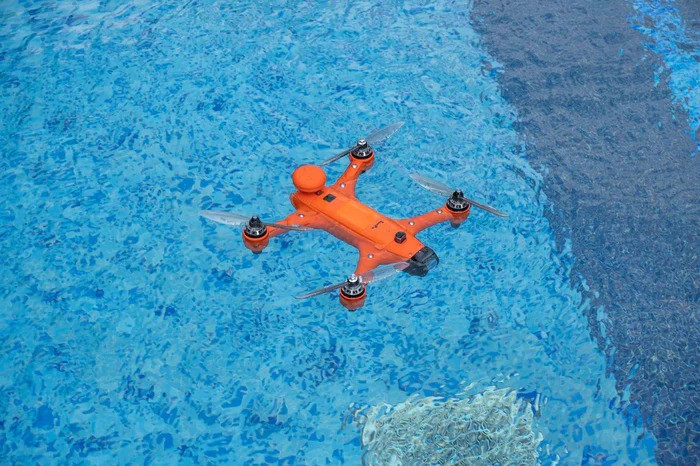
Military Drones: Designed for All-Weather Operations
Military drones, also known as ISR (Intelligence, Surveillance, and Reconnaissance) drones, are built to function in extreme weather conditions, including rain, high humidity, and strong winds. While they don’t always carry IP ratings, their durability comes from military-grade engineering and environmental testing.
Key Features of Military Drones in Wet Conditions:
- Sealed Systems: Critical avionics, sensors, and flight computers are housed in pressurized, watertight enclosures, preventing moisture damage.
- Corrosion-Resistant Materials: High-end drones use titanium, chromate-coated aluminum, and composite materials to withstand rain, humidity, and saltwater exposure.
- MIL-STD-810G Certification: Ensures the drone can function in extreme rain, temperature fluctuations (-50°C to 70°C), and high humidity without failure.
- Redundant Systems: Waterproof connectors, backup power buses, and multiple fail-safe mechanisms prevent water-induced failures.
Despite advanced waterproofing, military drones still have operational limits, as heavy storms and lightning threaten navigation and electronics, water immersion can compromise systems, and post-mission maintenance is essential to prevent corrosion.
Which Drones Can Fly in the Rain?
While most consumer drones aren’t built for wet weather, a number of industrial and specialty drones are engineered to handle rainy conditions.
Among these, the JOUAV PH-20 stands out for its rugged design and proven performance. With an IP55 rating, it provides strong protection against dust and low-pressure water jets from any direction. Industrial-grade waterproofing—such as gaskets around the battery compartment, ports, and camera housing—ensures key components remain sealed and secure during flight.
In field tests, this hexacopter drone maintained stable flight in moderate rainfall (around 5 mm/hr) for up to 45 minutes. Post-flight inspections showed no water ingress in any critical system, confirming its durability in both wet and windy conditions.
How to Fly Safely in the Rain?
While avoidance remains the optimal strategy, certain operational scenarios may necessitate drone flight in light rain.
Monitor the Weather with Precision
Before any rainy flight, weather intelligence is essential. Use radar-based applications like Windy, RadarScope, or MyRadar to track rain cells in real time. Understanding radar color codes is key—green and yellow blips indicate light, generally manageable rain (under 2.5 mm/hr), while red or magenta signals call for immediate mission abort due to heavy precipitation.
Evaluate Wind Conditions
Rain often comes with wind, and ignoring wind speed can lead to mission failure. If sustained wind exceeds 15 mph (6.7 m/s), even drones with IP55 ratings may become unstable. Monitor both surface wind and gust conditions at planned altitudes.
Prepare Your Equipment on the Ground
Takeoff Protection: Create a sheltered launch environment using a car hatchback or a building overhang, or have an assistant hold an umbrella over the drone. This prevents water from entering vulnerable components during startup.
Use a Waterproof Landing Pad: Deploy a waterproof pad such as the Hoodman Drone Pad to keep the drone’s undercarriage dry and reduce mud splatter during takeoff and landing.
Configure Your Drone for Rain Flight
Before launch, adjust your drone’s settings for wet-weather operation:
- Disable Obstacle Avoidance: Rain droplets can confuse sensors, triggering false positives.
- Lower Return-to-Home (RTH) Altitude: Set a conservative RTH altitude to stay below cloud cover and avoid tall obstacles like trees.
- Check Firmware & Calibration: Ensure the compass, IMU, and gimbal are fully calibrated in a dry setting.
Adopt Safer Flight Tactics
- Keep it Low and Close: Maintain a low altitude (below 50 ft or 15 m) and stay within 300 ft (90 m) of your position. This helps preserve visual line-of-sight (VLOS), especially if the FPV feed fails.
- Avoid Water Bodies: Flying over lakes or rivers adds significant recovery risk. If a water-soaked drone crashes into a water body, recovery and salvage can be extremely difficult.
- Fly Smoothly, Not Aggressively: Use Cinematic Mode (Cine Mode) for smoother inputs and avoid sudden maneuvers that might force water into vents or camera gaps. Constant, gentle motion is better than hovering, as propeller downwash can force rain into the electronics.
- Choose Flight Patterns Wisely: Gentle orbits and lateral movement help sling off water. Diagonal movements during descent can prevent water accumulation underneath the drone.
Monitor Your Drone in Real Time
Rain impacts flight performance, so stay vigilant:
- Watch Battery Levels: Cold rain can reduce battery efficiency. Plan to land with 40% battery remaining, not 20%.
- Check for Motor Alerts: Motor overload warnings may indicate wet propellers stressing the ESCs.
- Inspect Camera Feed: A blurry lens means water droplets are interfering—initiate landing immediately.
If the rain intensifies mid-flight, abort and return. If the GPS remains stable, use RTH; if not, fly back manually while avoiding vertical descent.
Post-Flight: Handling a Wet Drone
- Immediate Response: Turn off the drone and remove the battery immediately. This prevents shorts. Use compressed air to blow out moisture from motors, vents, and the gimbal.
- Drying Process: Disassemble the drone: remove the propellers, battery, and gimbal cover. Air-dry for at least 48 hours in a moisture-free environment. Use silica gel packs to speed up drying. Avoid using rice—it’s ineffective.
- Saltwater Exposure: If your drone falls into saltwater, rinse it thoroughly with distilled water as soon as possible to reduce corrosion, then follow the full drying process.
Prevent and Inspect for Corrosion
Once dry, apply CorrosionX or a similar corrosion-inhibiting spray to connectors, motor bearings, and exposed solder points. Inspect the drone’s internals carefully—greenish discoloration on circuit boards indicates corrosion and may require professional cleaning or component replacement.
What to Do When Your Drone Gets Wet?
When a drone gets wet, swift and methodical action is crucial to minimize damage and potentially salvage the equipment.
Immediate Power Down and Battery Removal
The moment the drone is wet, immediately power it down, along with the remote controller. If submerged, retrieve the drone from the water as quickly as possible and then power it down.
Remove the battery as soon as it's safe to do so. This action is critical to prevent short circuits, which can instantly fry sensitive electronic components. Isolating the power source is the first step in mitigating electrical damage.

Physical Water Removal
If the drone experiences heavy rain or submersion, gently shake it to expel water from crevices and openings.
Hold the drone upright and tilt it in various directions to facilitate drainage. This action removes as much water as possible, reducing the risk of deeper seepage and subsequent corrosion or short circuits.
Initial Surface Drying
Use a clean, dry cloth to meticulously wipe the drone's exterior, paying particular attention to joints, battery contacts, and ports.
Dab carefully, avoiding any attempts to power on the drone. Open compartments like the battery slot and SD card cover, and pat them dry. This prevents surface water from slowly infiltrating internal components and causing corrosion.
Freshwater Rinse for Contaminants
If the drone was exposed to dirt or saltwater, a freshwater rinse is mandatory. Although counterintuitive, this step is crucial to remove corrosive contaminants.
Use distilled water, or at least fresh tap water, to gently rinse electronic components. For saltwater exposure, consider submerging the drone in distilled water to thoroughly flush out salt deposits.
Salt and minerals are highly corrosive, and distilled water is non-conductive, effectively diluting and washing away these harmful residues.
Moisture Displacement with Isopropyl Alcohol
For significant water intrusion, especially in electronic components, a rinse with 99% isopropyl alcohol is recommended.
Gently bathe circuit boards or flooded components in alcohol, which displaces water and evaporates quickly. Shake out any excess alcohol.
Isopropyl alcohol is a standard electronics cleaning agent, absorbing water and carrying it away without leaving conductive residues.
Thorough Drying Procedures
Allow the drone to dry thoroughly for a minimum of 24-48 hours in a warm, dry environment.
Do not attempt to power on the drone prematurely. Place it in a bag or container with desiccant packets or uncooked rice to absorb moisture.
Utilize a gentle heat source, such as a fan heater at a low setting or a nearby dehumidifier, ensuring air circulation around the drone.
If possible, remove panels or covers to facilitate internal drying. Complete drying is essential to prevent latent short circuits.
Comprehensive Inspection
After the drying period, conduct a meticulous inspection of the drone.
Look for signs of corrosion, such as whitish or greenish deposits on copper or rust on steel parts, and mineral residues.
Sniff for any burnt electronics smells. Gently clean any visible residues with isopropyl alcohol and a soft brush.
Verify that mechanical parts, like motors and gimbals, move freely without any grit.
Power On Testing
Reinstall a fully dry battery (avoiding the soaked battery unless verified dry).
Power on the drone and controller in a safe area, with a fire-safe surface in case of battery issues.
Be prepared to immediately power off the drone if any anomalies occur, such as strange noises or smoke.
If the drone powers on normally, conduct a short test flight at a low altitude to assess functionality.
Be ready to land if any unusual behavior is seen.
Battery and Professional Repair Considerations
If the battery was submerged, it is often safest to dispose of it, as internal damage may not be immediately visible.
If the drone fails to power on or exhibits significant issues after these steps, professional repair may be necessary.
Manufacturers' warranties typically do not cover water damage, but care/refresh plans may offer replacement options for a service fee.
How Do You Waterproof Your Drone?
While most consumer drones aren’t fully waterproof, you can take steps to improve their water resistance and reduce the risk of damage from light rain or splashes.
Conformal Coating for Electronics
The most critical step in water resistance is safeguarding the internal electronics. Applying a conformal coating—usually silicone- or acrylic-based—adds a protective layer to the circuit boards, shielding them from moisture that could lead to corrosion or short circuits.
This process typically involves partially disassembling the drone and carefully masking off areas like connectors, sensors, and heat-generating parts to ensure functionality isn’t affected. After coating, always test the drone thoroughly to make sure everything still works correctly.
External Covers and Skins
To protect the drone’s body and seams from water exposure, consider neoprene jackets or custom rain covers like those from Phantom Rain. These covers are designed to block water from entering ventilation openings and other vulnerable spots.
If a dedicated cover isn’t available for your model, you can improvise with thin plastic film, vinyl skins, or even electrical tape to cover ports. Just make sure not to block cooling vents or critical sensors in the process.
Water-Repelling Sprays and Camera Lens Protection
Hydrophobic nano-coatings, like NeverWet or UltraTech, can be applied to the drone’s surface to help repel water and reduce droplet buildup. These sprays are especially useful on the camera body and shell but should be applied with care to avoid contact with sensitive electronics.
For the lens, use hydrophobic filters or protectors to keep your footage clear even in drizzle. Reapply these coatings periodically as their effectiveness fades over time.
Sealing the Cracks
Moisture often sneaks in through tiny gaps like seams, screw holes, and battery compartments. Applying a clear silicone sealant or waterproof tape to these areas can help block water intrusion.
Don’t forget to add port covers, but be cautious not to seal off cooling vents that are designed to stay open for airflow.
Safeguarding Motors and Propellers
Although brushless motors are fairly water-resistant, giving them extra protection is a smart move. Lightly applying a corrosion inhibitor like CorrosionX to motor bearings helps prevent rust. During storage or transport, silicone motor caps can keep out dust and moisture.
Also, consider installing propeller guards—they reduce the chance of hitting obstacles in low-visibility conditions like fog or light rain.
Improved Landing and Water Safety Features
To keep your drone from sitting in puddles or mud during takeoff and landing, attach landing gear extensions. These raise the body slightly and reduce moisture exposure underneath.
For flights near water, a float kit—made of foam or inflatable pontoons—adds emergency flotation in case of an accidental landing in water.
Internal Moisture Control with Silica Gel
Another layer of defense is placing silica gel packets or absorbent foam inside the drone. These materials draw in excess moisture that might make its way inside. Be careful not to block internal vents or throw off the drone’s balance.
Know the Risks Before You Modify
Before making any modifications, understand the trade-offs. DIY waterproofing can void your warranty, and added materials may affect the drone’s weight, cooling efficiency, or flight stability.
Always run thorough tests, including light spray tests, to ensure everything is still functioning correctly before taking your drone out in the rain.



